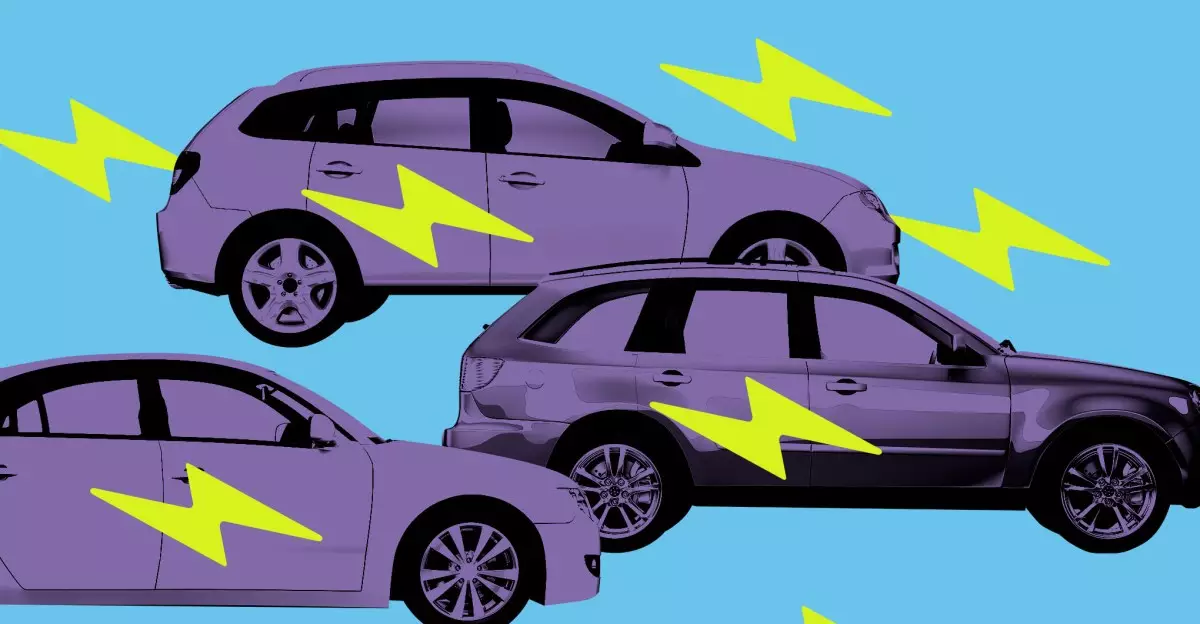The way we perceive and manage road safety is on the verge of a transformative shift, thanks in large part to emerging technologies and innovative methodologies in traffic safety. Recent research by the AAA Foundation for Traffic Safety sheds light on an unconventional approach: real-time monitoring of our driving habits through smartphone applications. This study demonstrates how the integration of advanced tracking techniques can foster a culture of safer driving and potentially curb the alarming number of fatalities caused by vehicle crashes, which surpassed 40,000 in the U.S. in 2023.
Traditionally, driver safety has been assessed using relatively static measures such as historical driving records and vehicle types. Nonetheless, the AAA’s research advocates for a proactive model that utilizes real-time data, adapting the principles originally established by usage-based insurance (UBI) programs. These programs have largely been voluntary, appealing to consumers looking to lower their insurance premiums by demonstrating safe driving behaviors. However, the benefits could extend far beyond individual financial incentives.
Real-Time Feedback as a Game Changer
The innovative aspect of the study is its focus on real-time feedback and how it influences driving behavior. Participants were assigned to different groups, with some receiving regular updates about their driving habits, while others were simply observed. This method of immediate reinforcement proved to be a game changer. The results indicated a significant behavioral shift: 13% of participants reduced their speeding, 21% improved their hard braking, and a notable 25% exhibited more controlled acceleration.
It’s a classic example of behavior modification through feedback. The study effectively demonstrates how providing information about one’s actions can prompt individuals to make conscious changes to their behavior. This finding aligns well with psychological principles surrounding motivation — specifically that positive reinforcement can be more effective than punitive measures in facilitating lasting change.
Understanding the Reluctance to Monitor Driving Behavior
Despite the demonstrable advantages of utilizing smartphone applications for real-time monitoring, there remains a societal hesitance surrounding the concept. Many individuals are uncomfortable with the idea of being constantly tracked, particularly by institutions like insurance companies. This discomfort often stems from an inflated self-perception of one’s driving abilities, leading to a disconnect between self-assessment and actual driving behavior.
Interestingly, the study found that participants maintained a sense of safety that did not necessarily reflect reality. The baseline safety scores provided at the beginning may have contributed to a false sense of security, thus limiting the perceived necessity for behavior change in areas like smartphone usage while driving. This psychological barrier underscores the need for public education on the correlation between self-assessment and behavior, making a compelling case for a more transparent approach to how real-time data can be used for constructive purposes.
Insights and Implications for Future Road Safety Initiatives
The AAA study opens new avenues for initiating widespread change in driving behaviors across demographics. With statistics indicating a growing enrollment in UBI programs—12% in 2020 and nearly 20% in 2024—this model of driving safety could soon become the norm. Various factors influence this shift, including a cultural transition toward ubiquitous smartphone usage for monitoring different aspects of life, from fitness to diet. Why not apply the same discipline to driving?
Respondents in the study showed a preference for receiving feedback through various methods, with a considerable percentage favoring text updates or detailed dashboards. Such insights could inform the design of future applications aimed at boosting safe driving behaviors. The possibility of gamifying safe driving via apps could also create a more engaging experience, promoting positive competition among users.
Moreover, the study emphasizes the need for modern approaches in educating drivers about safety. Innovating the way road safety is presented and perceived may well be the key to reducing fatalities and accidents. As we embrace technology that measures our habits in real-time, it is essential to harness that power for the greater good, transforming the landscape of road safety for generations to come.
Final Thoughts: A Justifiable Shift in Mindset
Embracing technology for monitoring driving habits fundamentally challenges our traditional perceptions of safety and responsibility. As society navigates this frontier, the positive potential of real-time feedback can no longer be ignored. The evidence is compelling; the future of driving safety might well hinge on our willingness to adapt to new mechanisms that prioritize education and positive reinforcement, ultimately saving lives on our roads.

